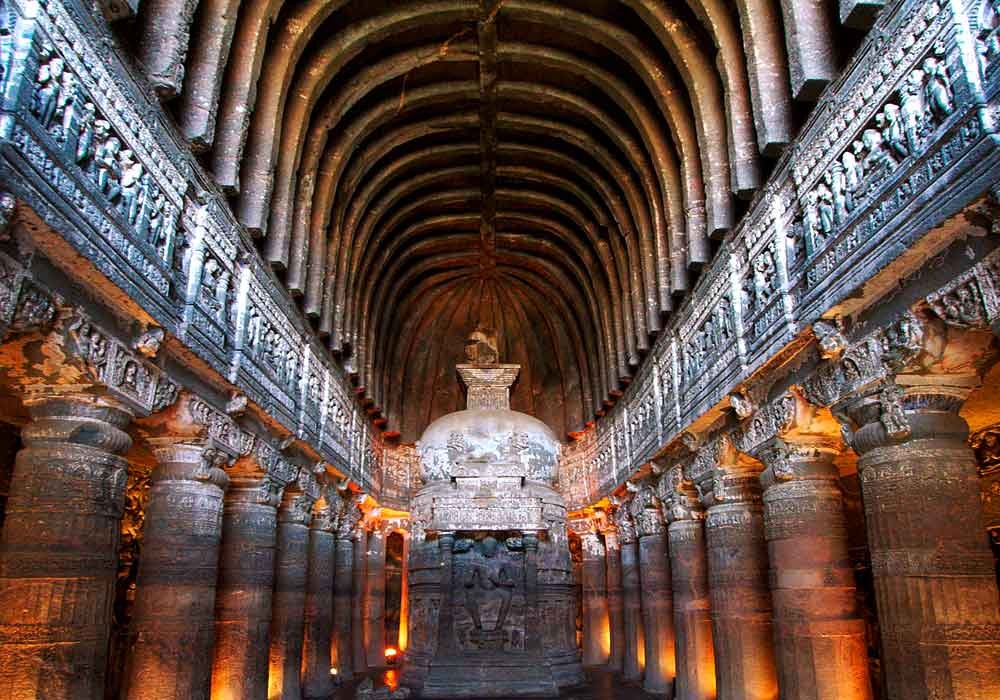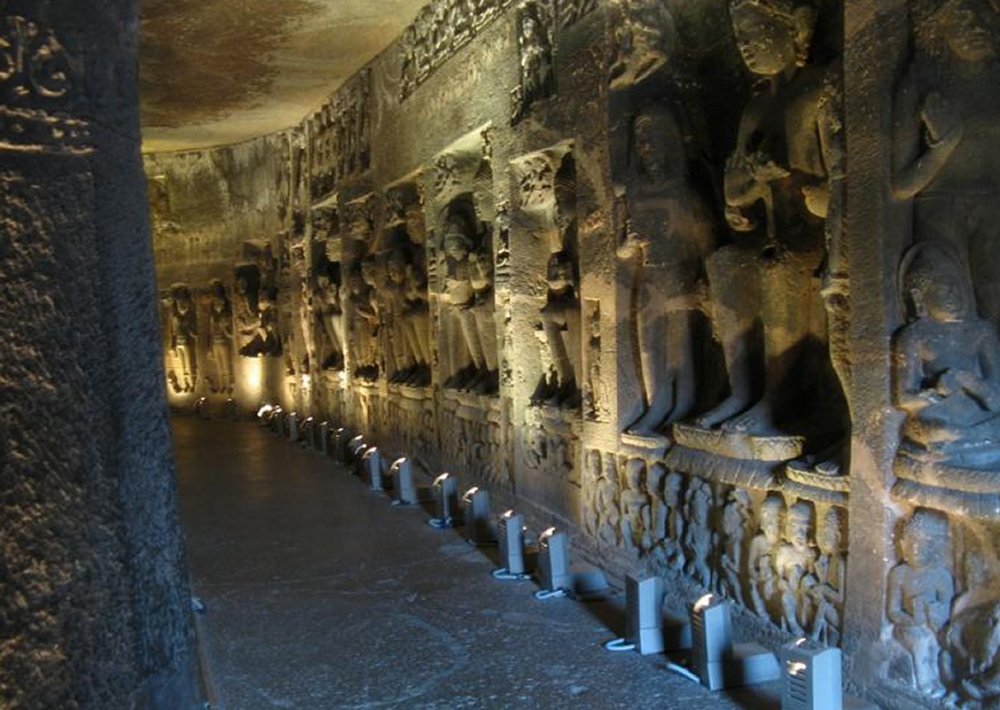The Ajanta Caves were built by the Vakataka kings of ancient Nandivardhan.

Archaeologists from Deccan College, India have excavated the ancient capital of Nandivardhan (present day – Nagardhan). The great city was ruled by the Vakataka dynasty during 250-550 CE.

The Vakatakas are known for building India’s architectural wonder– the cave temples of Ajanta in Aurangabad, western India, reports The Indian Express.
Famous caverns of Ajanta, India
The excavations led by Shrikant Ganvir, senior archaeologist at the Deccan College and co-director of the Nagardhan Excavation Project have revealed artifacts belonging to the period of the Vakataka rule.
“Some of the artifacts, including ceramics and ear studs made of glass, were excavated from the site and these were the typical items used during this period,” Shrikant Ganvir said.
The findings include ceramics, antiquities, bowls and pots, votive shrine and tank, iron chisel, a stone depicting a deer and terracotta bangles were studied by the team, all of which were unique for this period.
See also:
Ajanta Caves: Incredible Accomplishment Of India’s Ancient Stonecutters
Extraordinary 5,000-Year-Old Astronomical Event Depicted On Indian Rock Carving

Unique Medieval Horsemen Sculptures Made By Unknown Creators In India – Puzzling Discovery In The Himalayas
Additionally archaeologists have unearthed the bones of domesticated animals such as goats, sheep, pigs, cats, horses, and fowls .
What makes the findings more important is the fact that so far, researchers have only managed to get written inscriptions and copper plates, all featuring the Vataka king, Prithvisena.
The Ajanta Caves are 29 (approximately) rock-cut Buddhist cave monuments, which date from the 2nd century BCE to about 480 CE in Aurangabad district of Maharashtra state of India. The caves include paintings and rock-cut sculptures
described as among the finest surviving examples of ancient Indian art, particularly expressive paintings that present emotion through gesture, pose and form. Image via MaharashtraPlanet
The discovery also confirms an important historical fact that the king shifted his capital from Padmapura to Nandivardhan (present day Nagardhan), in Vidarbha.
Terracotta objects with images of gods, animals, humans, along with amulets, scotches, wheels, skin rubbers and spindle whorls were discovered.
An intact idol of Ganesha, without any ornaments, revealed that the deity was among the commonly-worshiped ones, and in this case, meant for private worship. Shantanu Vaidya, another co-director for the project, said: “The excavations were planned and carried out at six different locations.
The findings include ceramics, antiquities, bowls and pots, votive shrine and tank, iron chisel, a stone depicting a deer and terracotta bangles were studied by the team, all of which were unique for this period. Image via paperdabba.com
Researchers say that some of the ceramics dates back to third to fourth century CE. At a location, another vital sign that came the team’s way was a near-intact clay sealing of the Vakataka empress, Prabhavatigupta, the chief queen of the Vakataka king, Rudrasena II.
“The clay sealing found at the site reveals that the queen was the head of the state post the death of king Rudrasena II. There is also a Bhramhi inscription bearing the queen’s name with a Shankha above it.”
“There were traces of structures of thick deposits, without any bricks, possibly indicating that before bricks were actually used for construction, there existed flimsy structures at this location,” Ganvir added